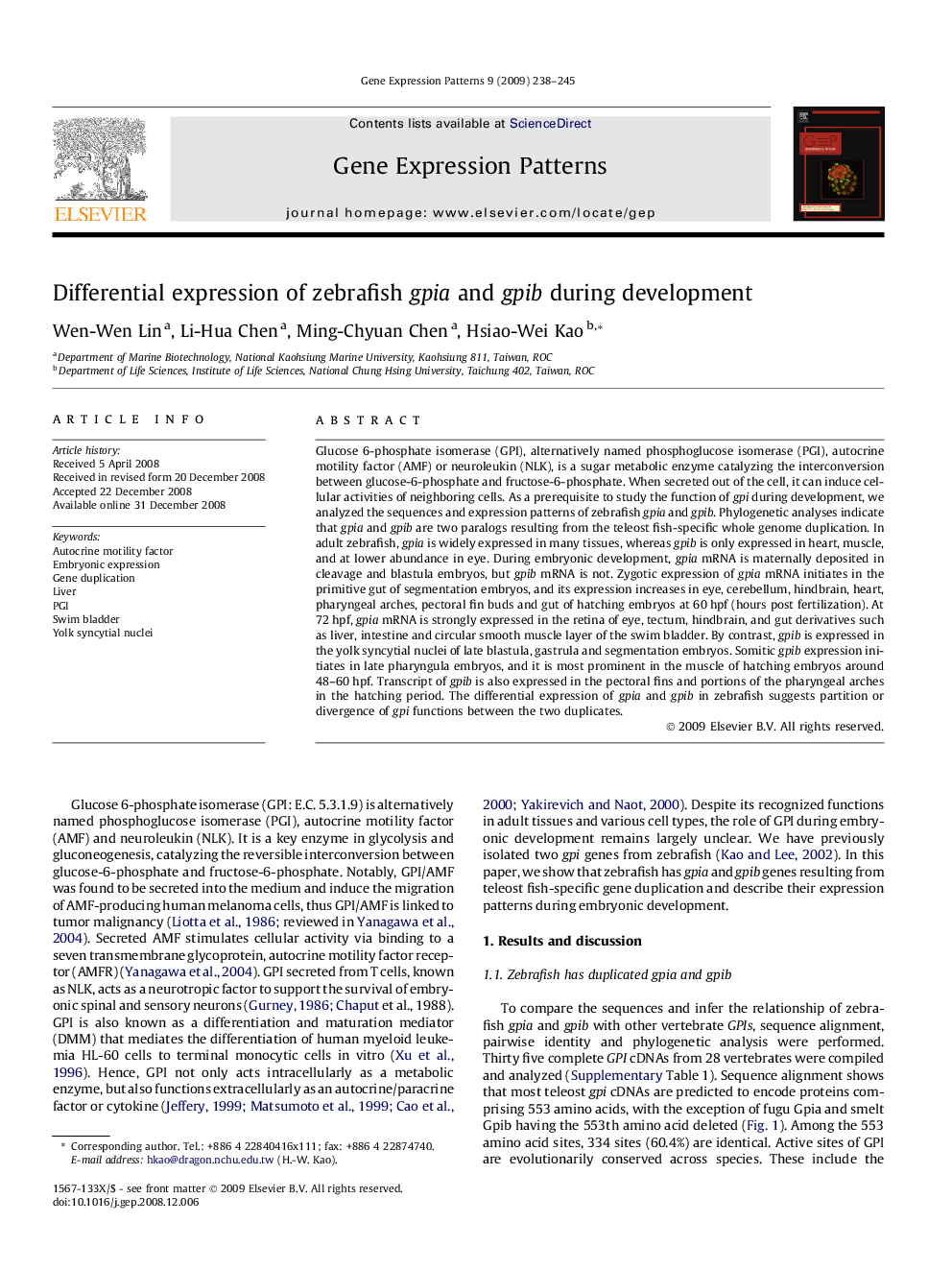| Article ID | Journal | Published Year | Pages | File Type |
|---|---|---|---|---|
| 2182177 | Gene Expression Patterns | 2009 | 8 Pages |
Glucose 6-phosphate isomerase (GPI), alternatively named phosphoglucose isomerase (PGI), autocrine motility factor (AMF) or neuroleukin (NLK), is a sugar metabolic enzyme catalyzing the interconversion between glucose-6-phosphate and fructose-6-phosphate. When secreted out of the cell, it can induce cellular activities of neighboring cells. As a prerequisite to study the function of gpi during development, we analyzed the sequences and expression patterns of zebrafish gpia and gpib. Phylogenetic analyses indicate that gpia and gpib are two paralogs resulting from the teleost fish-specific whole genome duplication. In adult zebrafish, gpia is widely expressed in many tissues, whereas gpib is only expressed in heart, muscle, and at lower abundance in eye. During embryonic development, gpia mRNA is maternally deposited in cleavage and blastula embryos, but gpib mRNA is not. Zygotic expression of gpia mRNA initiates in the primitive gut of segmentation embryos, and its expression increases in eye, cerebellum, hindbrain, heart, pharyngeal arches, pectoral fin buds and gut of hatching embryos at 60 hpf (hours post fertilization). At 72 hpf, gpia mRNA is strongly expressed in the retina of eye, tectum, hindbrain, and gut derivatives such as liver, intestine and circular smooth muscle layer of the swim bladder. By contrast, gpib is expressed in the yolk syncytial nuclei of late blastula, gastrula and segmentation embryos. Somitic gpib expression initiates in late pharyngula embryos, and it is most prominent in the muscle of hatching embryos around 48–60 hpf. Transcript of gpib is also expressed in the pectoral fins and portions of the pharyngeal arches in the hatching period. The differential expression of gpia and gpib in zebrafish suggests partition or divergence of gpi functions between the two duplicates.
